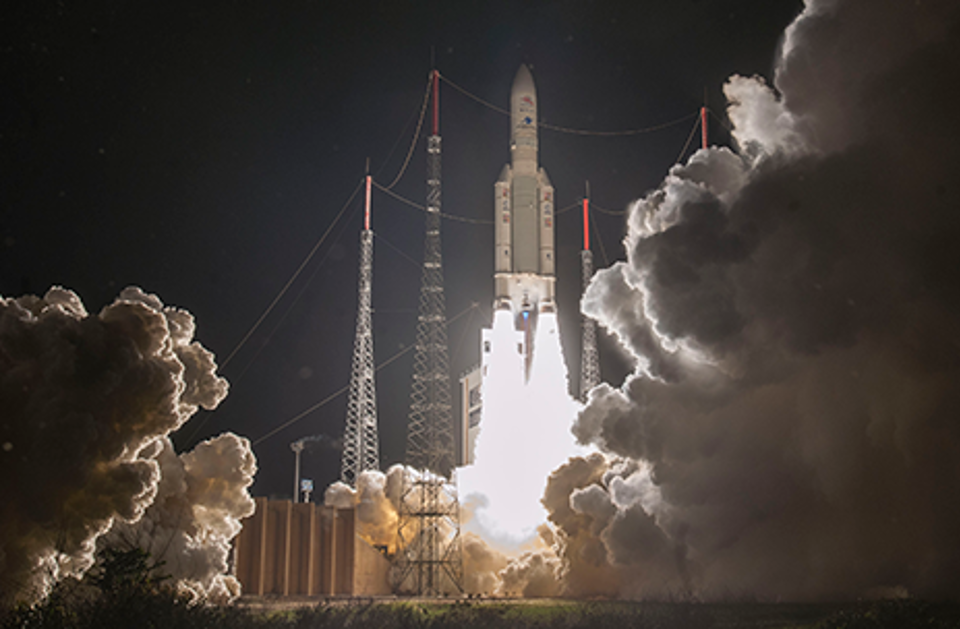2018-10-24
SUCCESSFUL LAUNCH OF BEPICOLOMBO
Teams at ESA’s mission control center have declared the critical "launch and early orbit phase" complete.

Saturday, 20 October at 03:45:28 CEST, the European mission to Mercury blasted off on an Ariane 5 laucher from Europe’s Spaceport in Kourou for a seven-year journey to the Solar System’s innermost planet.
Signals from the spacecraft, received at ESA’s control center in Darmstadt, Germany at 04:21 CEST, confirmed that the launch was successful.
On Monday, 22 October, the critical first segment of the satellite’s long voyage to Mercury was wrapped up as teams at ESA’s mission control center declared the critical ‘launch and early orbit phase’ (LEOP) complete.
BepiColombo is a joint endeavor between ESA and the Japan Aerospace Exploration Agency, JAXA. It is the first European mission to Mercury, the smallest and least explored planet in the inner Solar System, and the first to launch two spacecraft to make complementary measurements of the planet and its dynamic environment at the same time.
BepiColombo comprises two science orbiters: ESA’s Mercury Planetary Orbiter (MPO) and JAXA’s Mercury Magnetospheric Orbiter (MMO). The ESA-built Mercury Transfer Module (MTM) will carry the orbiters to Mercury using a combination of solar electric propulsion and gravity assist flybys, with one flyby of Earth, two at Venus, and six at Mercury, before entering orbit at Mercury in late 2025.
Terma provided the power unit for the MTM, the biggest and most advanced Power Conditioning and Distribution Unit (PCDU) developed by Terma, building on the success of power units provided for other interplanetary missions including comet chaser Rosetta and Mars and Venus orbiting spacecraft.
“The entire launch was successful and performed according to schedule. Lift-off and the initial series of maneuvers, like separation from booster and main stage until the control center acquires the first signal and the solar arrays are deployed, are always critical, says Senior Systems Engineer, Johnny Laursen. For more than 10 years, he was a key person in the design and development of the PCDU.
This high power unit provides the electrical power for the MTM, including the ion propulsion thrusters that will drive BepiColombo to Mercury during the entire journey. The PCDU also provides power for the MPO until arrival at Mercury.
The next months include extensive in-orbit commissioning activities, in which operations teams will work intensively until the end of December, performing tests to ensure the health of BepiColombo’s science instruments, its propulsion, and other systems.

The BepiColombo Mercury Transfer Module (MTM) returned a “selfi” from space. The view looks along one of the extended solar arrays, which was deployed a few hours after lift-off

Who we are
Terma in Brief
The Denmark based high-tech Terma Group develops products and systems for defense and non-defense security applications; including command and control systems, radar systems, self-protection systems for aircraft, space technology, and aerostructures for the aircraft industry.
Learn more about us



